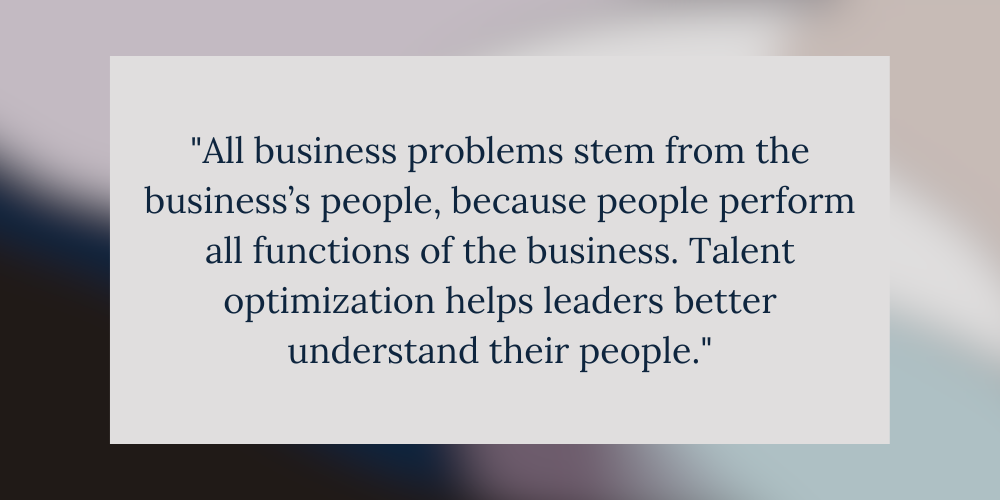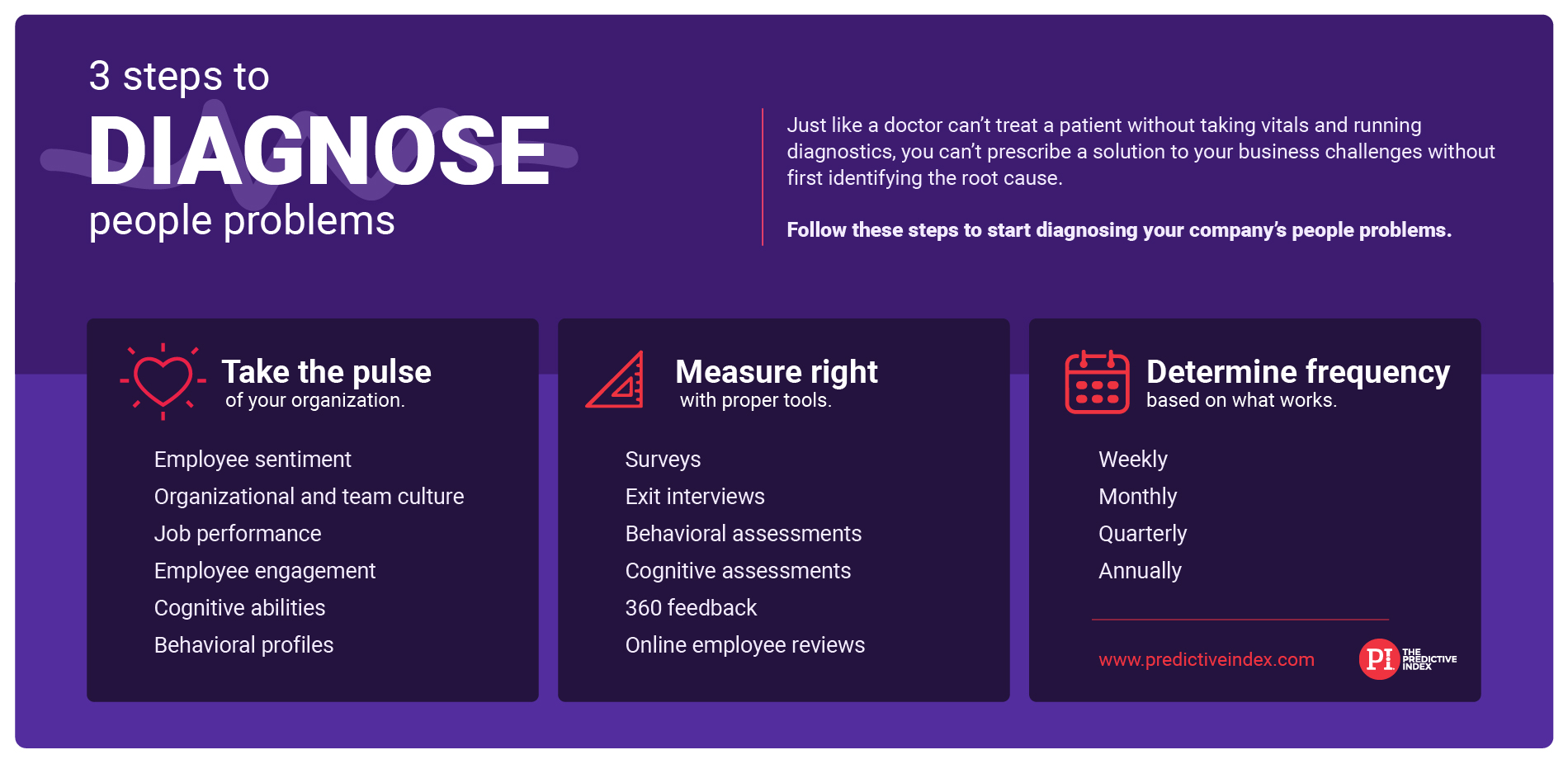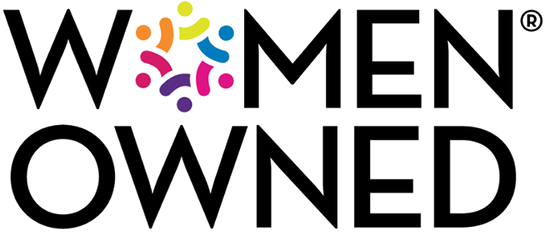In February 2021, The Predictive Index released a report called “The State of Talent Optimization,” which surveyed 515 CEOs, presidents, and senior vice presidents from more than 15 industries. This report found that:
-
- 87% of talent-optimized companies either met or surpassed their goals in the past year
-
- 93% of talent-optimized companies were able to avoid major financial loss, compared to 76% of non-talent-optimized companies
-
- Companies using The Predictive Index’s Talent Optimization system reported increased sales of 20%
These results, achieved in a pandemic year, speak for themselves.
So what exactly is talent optimization?
What is Talent Optimization?
Simply put, talent optimization is aligning your talent, or people, strategy with your business strategy.
All business problems stem from the business’s people, because people perform all functions of the business. Talent optimization helps leaders better understand their people.
Implemented correctly, talent optimization helps senior leadership understand and identify their problems, create solutions, and put those solutions into action.
To demonstrate how this problem/solution/action model works, let’s look at an example.
Identify the Problem
While COVID-19 introduced immense flexibility into the business world, it also introduced a host of challenges.
-
- The “Great Resignation” of people quitting their jobs
-
- Uncertainty about when to reopen offices
-
- Decisions about continued remote work vs on-site work
We have identified these three problems, now let’s attempt to understand them in depth.
The “Great Resignation”
The “Great Resignation” seems to have resulted from employees who feel overworked or exhausted and have used this time of pandemic to rethink what they want from their professional lives. Many are no longer compelled by monetary benefits; rather, they prioritize work-life balance.
Reopening Offices
Deciding if or when to reopen offices is complicated. Senior leaders must evaluate the realities of a continuing pandemic, the preferences of their employees, the opportunity for cost savings, and the ability to achieve their business goals.
Ultimately, leaders must strike a balance between what the business needs to be successful and what its people desire.
Flexible Work Arrangements
In March 2021, a Mercer survey of more than 700 U.S. employers found that 87% of companies will embrace greater flexibility post-pandemic.
The benefits of flexible work arrangements are many, including assistance in recruiting, improving retention, reducing absenteeism, and boosting productivity. But there are also challenges such as a trying to foster team cohesion, navigating miscommunication caused by a lack of face-to-face interactions, and calming disgruntled employees whose roles make them unable to work remotely.
Brainstorm Solutions
Though each of these problems are people-centered, all solutions should still start with a review of the company’s business strategy or goals. Any proposed solution must first still be in line with the goals, unless you determine that a goal should be revised.
After reviewing the business strategy, it’s time to identify solutions that will allow you to best utilize your greatest asset, your people.
The “Great Resignation”
Employees are leaving their employers in record numbers since the beginning of the pandemic, so this problem is critically important to address.
A challenge of this magnitude can be complicated to solve and multi-faceted in nature.
But as always, you should start with your people.
Empower your people by selecting a few high-performing employees to form a retention committee. This committee should survey current employees to determine how they feel about their current work conditions and ask what improvements they would suggest.
The committee can report these findings to senior leaders. Then, senior leaders have a set amount of time to digest the information and communicate what changes they will make at a company meeting.
In the short term, managers should find small ways to reward valuable employees, such as gift cards, an afternoon off, words of praise, etc.
Because employees considering quitting value work-life balance, it’s especially important to reinforce the message that completing their work is more important than putting in a certain amount of time or having a rigid schedule.
Reopening Offices
At first thought, the options here seem pretty straightforward. Either reopen and everyone comes back to the office, or stay closed and let everyone continue to work remotely.
However, those are only two of, and perhaps not even the best, solutions.
Based on the information you gathered when exploring the problem in depth, better options could include opening a few days a week, opening with a skeleton crew of those who must be onsite, or opening only for important meetings.
Vaccine and mask requirements, or lack thereof, prior to opening are a completely separate issue that must also be discussed.
Flexible Work Arrangements
Many companies that Mercer surveyed plan on being flexible post-pandemic by avoiding an all-or-nothing approach. Most were not inclined to require employees to work 100% on-site or 100% remotely.
Now, more than ever before, many companies are embracing flexible work arrangements. Many flexible options that were never considered before are now up for discussion, such as:
-
- Compressed Workweeks: Working longer hours each day and shortening the number of working days per week
-
- Flextime: Allowing employees to choose the hours they work, or change the hours they work from one week to the next
-
- Hybrid Schedules: Working some days on-site and some days remotely
-
- Part Time: Allowing employees to work less than 40 hours per week, so they can balance work with other priorities
-
- Job Sharing: Having two different, part-time employees perform the tasks of one full-time position
Take Action
Taking action includes choosing a solution and identifying what success looks like. Success should include the realization of your business strategy goals and your people strategy goals.
Measurable success is key for realizing the return-on-investment for the work leaders and team members have contributed toward making decisions and affecting change.

If this seems like a daunting process, you may need to seek outside help. For personalized, expert advice, don’t hesitate to get in touch with us. You can schedule a complimentary 45-minute discovery call by contacting our team here today. Let’s discuss a talent optimization strategy options that fit your company’s needs. We can help you identify some immediate wins and long-term solutions.





